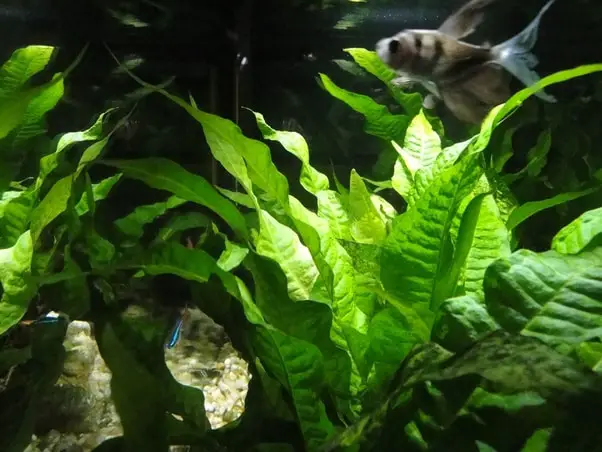Certain house plants, such as Anubias, Java Fern, and Lucky Bamboo, can thrive fully submerged in water. These aquatic plants adapt well to water environments.
House plants that can be fully submerged in water add a unique touch to your indoor space. Anubias and Java Fern are popular choices among aquatic plant enthusiasts. They are hardy, low-maintenance, and grow well without soil. Lucky Bamboo, despite its name, can also thrive in water.
These plants provide a serene, natural aesthetic to your home. They improve air quality and create a calming ambiance. Submerged plants are perfect for aquariums and water gardens. They require minimal care and are ideal for busy lifestyles. Enjoy the beauty of underwater greenery in your home.
Credit: www.quora.com
Introduction To Submerged House Plants
House plants that can be fully submerged in water are unique. They bring a touch of nature to your home. These plants thrive without soil. They need only water and light.
Submerged house plants are easy to care for. They are perfect for beginners. They also look stunning in clear glass containers. This setup allows you to see the roots and growth.
Let’s explore the benefits and popular choices of these amazing plants.
Benefits Of Water Plants
Water plants offer several benefits:
- Low Maintenance: No need to worry about soil or pests.
- Cleaner Air: They help purify the air in your home.
- Decoration: They look beautiful and unique in any space.
- Educational: They provide a great learning experience for kids.
Popular Choices
Here are some popular submerged house plants:
- Anubias: A hardy plant that thrives underwater.
- Java Fern: Perfect for low light conditions.
- Amazon Sword: Known for its large, vibrant leaves.
- Hornwort: Grows quickly and helps filter water.
These plants are easy to find and maintain. They offer a unique way to bring greenery into your home.
Key Factors For Submerged Plants
Fully submerged house plants can bring a unique charm to your home. To ensure they thrive, understanding the key factors is crucial. These include water quality and light requirements. Below, we explore these elements in detail.
Water Quality
Water quality plays a vital role in the health of submerged plants. Ensure the water is free from harmful chemicals and pollutants. Use distilled or filtered water for best results.
Consider these elements for optimal water quality:
- pH Levels: Maintain a neutral pH level around 6.5 to 7.5.
- Temperature: Keep the water temperature between 68-74°F (20-23°C).
- Nutrients: Use liquid fertilizers designed for aquatic plants.
Check the water regularly. Replace it if it appears cloudy or has an odor.
Light Requirements
Light is essential for the growth of submerged plants. Ensure they receive adequate lighting, but avoid direct sunlight.
Consider the following for optimal light conditions:
- Light Intensity: Use medium to high-intensity lights.
- Duration: Provide 8-10 hours of light daily.
- Type of Light: Utilize LED or fluorescent lights.
Place the plants near windows or use artificial lights. Ensure a consistent light schedule to mimic natural conditions.
Anubias Species
Houseplants that can be fully submerged in water are unique and fascinating. Among them, the Anubias species stands out. These plants are popular in aquariums due to their resilience and beauty. They can thrive entirely underwater, making them ideal for aquatic enthusiasts.
Ideal Conditions
The Anubias species thrives in specific conditions. They prefer low to moderate light. This helps prevent algae growth on their leaves. Their temperature range is between 72°F to 82°F. They grow well in neutral to slightly acidic water. The pH should be between 6.0 and 7.5.
| Condition | Requirement |
|---|---|
| Light | Low to moderate |
| Temperature | 72°F to 82°F |
| pH | 6.0 to 7.5 |
Maintenance Tips
Maintaining Anubias species is easy. Follow these tips for a healthy plant:
- Trim dead leaves regularly.
- Ensure proper water circulation.
- Avoid burying the rhizome in the substrate.
- Fertilize occasionally with liquid fertilizers.
Inspect the plant for any algae growth. Remove algae manually if found. These steps will keep your Anubias healthy and vibrant.

Credit: www.reddit.com
Java Fern
The Java Fern is a versatile and hardy plant perfect for beginners. This aquatic plant can thrive fully submerged in water, making it an excellent choice for aquariums.
Growth Patterns
The Java Fern has unique growth patterns. It grows slowly compared to other aquatic plants. The plant spreads through rhizomes which anchor to various surfaces.
Java Fern can grow on rocks, driftwood, and substrate. The leaves are green and can reach up to 13 inches in length. The plant doesn’t need to be rooted in the soil.
Care Guidelines
The Java Fern is easy to care for and perfect for beginners. Here are some key care guidelines:
- Water Conditions: Can thrive in a wide range of water conditions.
- Lighting: Prefers low to moderate lighting.
- Temperature: Optimal range is 68-82°F (20-28°C).
- pH Levels: Ideal pH range is 6.0-7.5.
It’s important to avoid burying the rhizome in the substrate. This can cause the plant to rot. Instead, attach the rhizome to a rock or piece of driftwood.
Regular pruning helps maintain the plant’s shape and health. Remove any dead or decaying leaves to prevent algae growth.
Fertilization is not required but can encourage faster growth. Liquid fertilizers designed for aquatic plants work best.
| Aspect | Details |
|---|---|
| Water Conditions | Wide range |
| Lighting | Low to moderate |
| Temperature | 68-82°F (20-28°C) |
| pH Levels | 6.0-7.5 |
Amazon Sword
The Amazon Sword is a popular aquatic plant known for its broad, green leaves. This plant thrives in water and is often used in aquariums. Its lush foliage provides a natural habitat for fish and other aquatic creatures.
Planting Methods
To plant an Amazon Sword, follow these steps:
- Choose a spot with moderate to high light.
- Ensure the water temperature is between 22-28°C (72-82°F).
- Use nutrient-rich substrate for better growth.
- Plant the roots, but keep the crown above the substrate.
Another method is to use plant weights. Attach the weights to the base and place the plant in the desired location.
Common Issues
Some common issues with Amazon Sword include:
- Yellowing Leaves: Check for iron deficiency and provide iron supplements if needed.
- Algae Growth: Control light exposure and maintain proper water quality.
- Melting Leaves: This can occur due to sudden changes in water conditions. Gradually acclimate the plant to new environments.
Regularly check for pests like snails or algae. Use appropriate treatments to keep the plant healthy.
Peace Lily
The Peace Lily is a popular house plant known for its elegant white flowers and lush green leaves. It’s also one of the few plants that can thrive fully submerged in water. This makes it an excellent choice for those looking to add some aquatic beauty to their indoor spaces.
Submersion Techniques
To fully submerge a Peace Lily, you will need a clear vase or container. The container should be large enough to hold the plant’s roots and some extra space for water.
- Start by cleaning the roots of the plant. Remove all soil and debris.
- Place the plant in the container. Ensure the roots are fully submerged.
- Fill the container with fresh, clean water. Leave about an inch of space from the top.
- Change the water every two weeks. This keeps the plant healthy and vibrant.
Health Benefits
The Peace Lily offers several health benefits. It helps purify indoor air by removing toxins like ammonia and formaldehyde. This makes your living space healthier.
- Air Purification: Removes harmful toxins from the air.
- Humidity Control: Adds moisture to the air, making it ideal for dry climates.
- Stress Relief: The presence of greenery can reduce stress levels.
Having a Peace Lily fully submerged in water also adds to its aesthetic appeal. The combination of water and greenery creates a calming effect.
| Benefit | Description |
|---|---|
| Air Purification | Removes toxins like ammonia and formaldehyde. |
| Humidity Control | Adds moisture to dry indoor air. |
| Stress Relief | Presence of greenery reduces stress levels. |
Bamboo Plant
The Bamboo Plant is a popular choice for indoor gardening. It is known for its elegant, slender stalks and lush green leaves. This plant can thrive in water, making it a unique and low-maintenance option for your home.
Watering Needs
Bamboo plants are easy to care for. They need clean water to grow well. Change the water every week to keep it fresh. Use filtered or distilled water to avoid chemicals.
Make sure the roots are fully submerged. Do not cover the stalks with water. This can cause rot. Keep the water level about an inch above the roots.
Decoration Ideas
Bamboo plants can be a stylish addition to your home. Use clear glass vases to show off the roots and water. This gives a modern and clean look.
Arrange the bamboo stalks in different ways. Tie them together with a ribbon for a neat look. Place pebbles or marbles at the bottom of the vase. This adds color and helps support the plant.
Here are some decoration ideas:
- Use a tall vase for a dramatic effect.
- Place multiple vases in a row for a minimalist look.
- Add LED lights to the vase for a unique touch.
These decoration ideas can make your bamboo plant the centerpiece of any room.

Credit: thehouseplantguru.com
Common Challenges
Keeping house plants fully submerged in water can be rewarding. Yet, it comes with its own set of challenges. These challenges can affect plant health and growth. Let’s explore the most common issues.
Algae Growth
Algae often grow in water when light is abundant. This green growth can cover plant roots and block light. Algae consume nutrients meant for the plants. This can stunt plant growth and make water look dirty.
To manage algae, keep the water container clean. Use opaque containers to block light. Change the water regularly. Adding a small amount of hydrogen peroxide can also help.
Nutrient Deficiency
Plants need nutrients to thrive. Water alone does not provide enough nutrients. This can lead to yellow leaves and weak growth. Nutrient deficiency is a common issue for submerged plants.
| Nutrient | Deficiency Symptoms |
|---|---|
| Nitrogen | Yellow leaves and stunted growth |
| Phosphorus | Dark green leaves with purple spots |
| Potassium | Brown leaf edges and weak stems |
To prevent nutrient deficiency, use a balanced liquid fertilizer. Add the fertilizer to the water every few weeks. Ensure the water has the right pH level. This helps the plant absorb nutrients better.
Frequently Asked Questions
What Houseplants Can Live In Water?
Pothos, lucky bamboo, and spider plants can thrive in water. Simply place their roots in water-filled containers.
What Plants Can Grow Solely In Water?
Spider plants, pothos, lucky bamboo, and philodendrons can grow solely in water. They thrive with proper light and nutrients.
Can You Fully Submerge Pothos In Water?
Yes, you can fully submerge pothos in water. Ensure the water is clean and change it regularly for healthy growth.
Can Any Plant Grow Submerged?
Yes, some plants can grow submerged. Examples include water lilies, elodea, and hornwort. These aquatic plants thrive underwater.
Conclusion
Growing house plants fully submerged in water can be both beautiful and rewarding. With the right care, plants like Lucky Bamboo and Pothos thrive underwater. This method reduces soil mess and pests. Experiment with different species to find your perfect water garden.
Enjoy the tranquility and elegance of submerged house plants.

My mission is to help you bring the beauty of nature indoors with expert advice, detailed plant care guides, and creative design ideas.





Leave a Reply